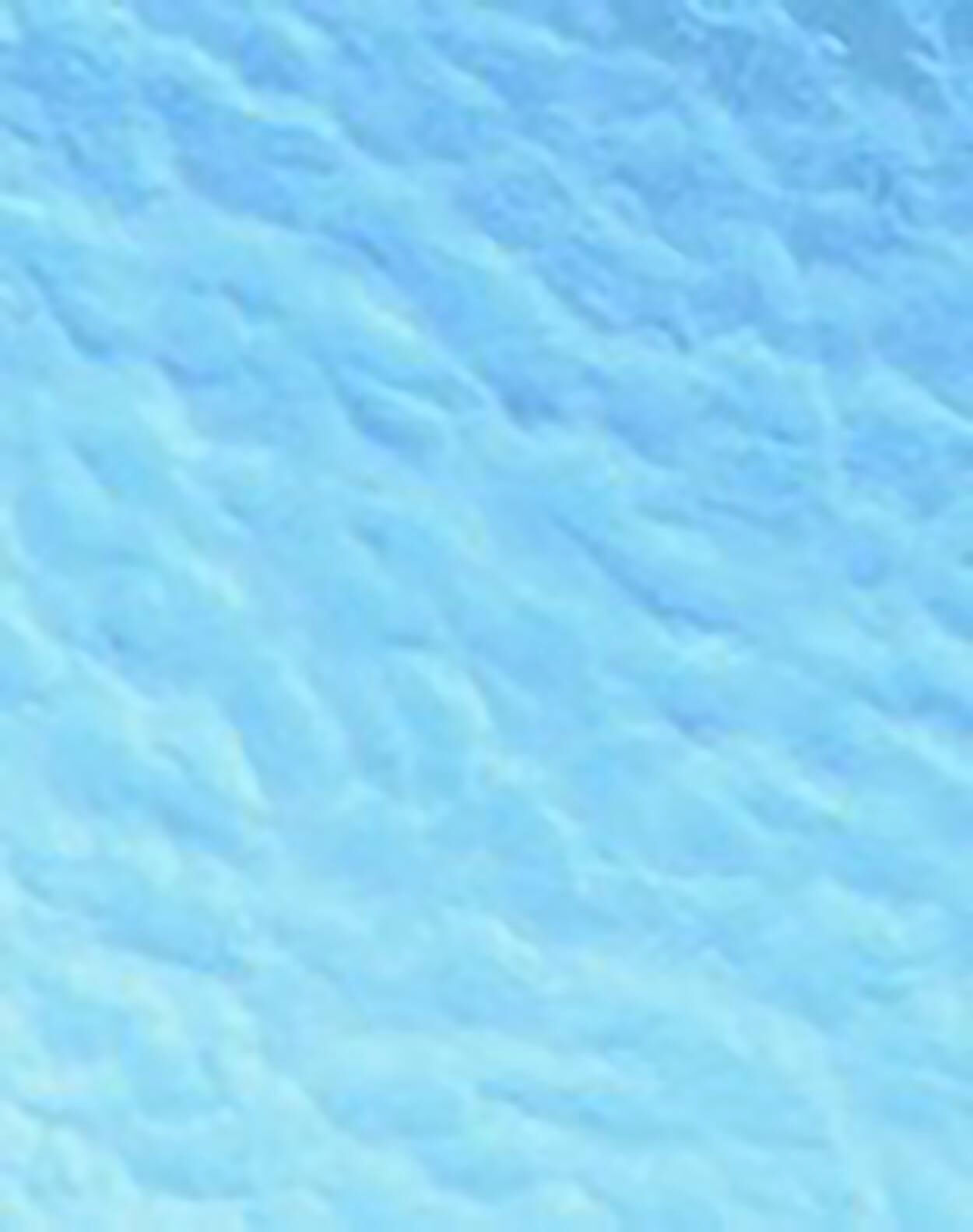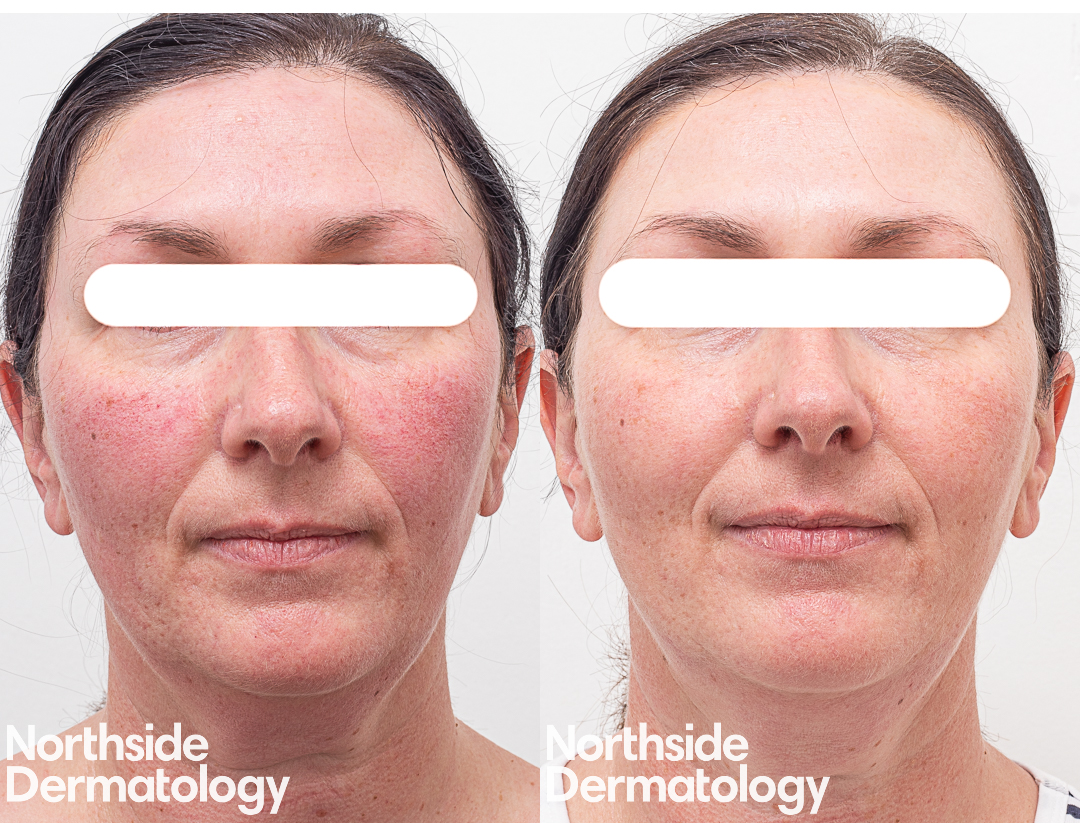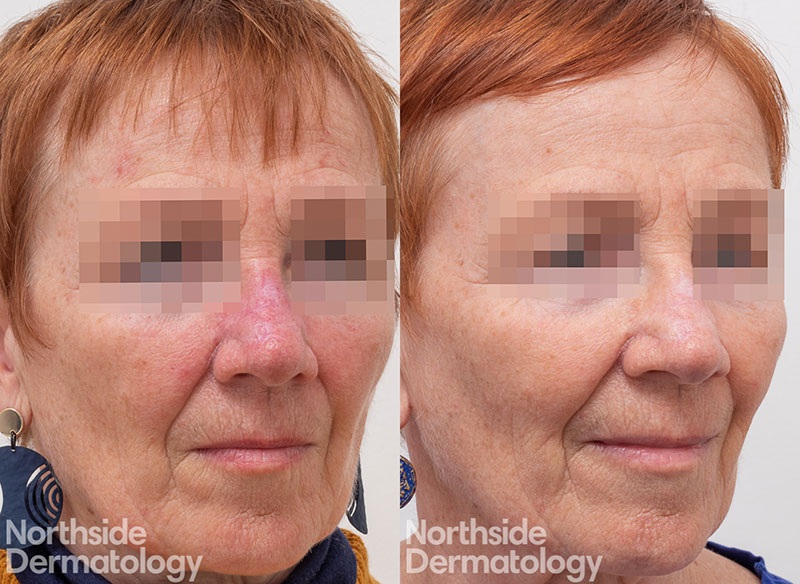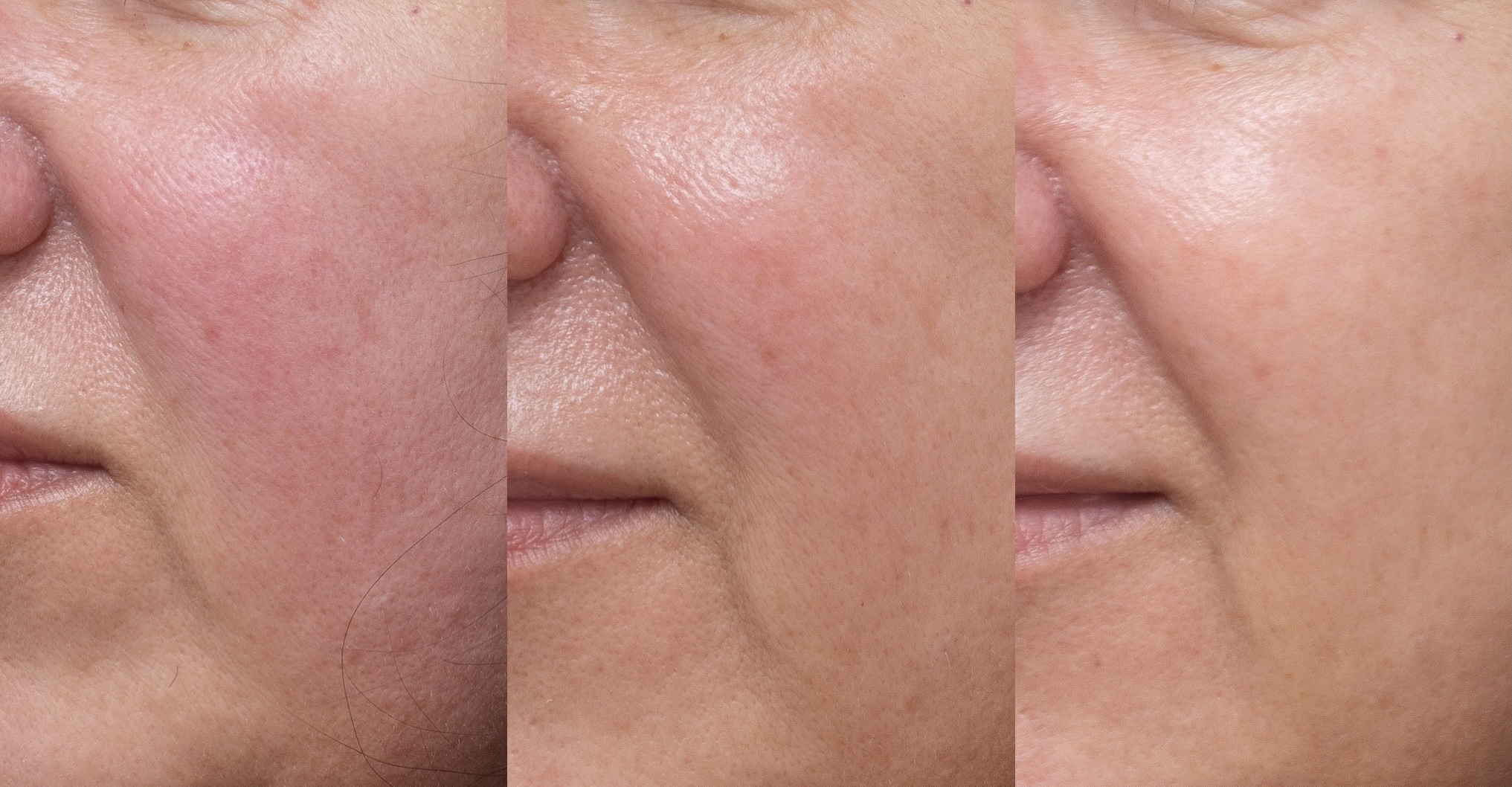
Rosacea Treatment
A flushed face is a natural reaction to excitement, embarrassment, anger, warm weather, exercise and other triggers, but for some people, facial redness is a sign of a more serious condition: rosacea. Rosacea is a chronic and sometimes progressive skin disorder that causes redness, swelling and sensitivity on the face. It may begin as a tendency to blush or flush easily, then evolve into persistent redness that can spread from the cheeks to other parts of the face.
Early diagnosis and treatment are key to successful management of rosacea. Mild cases can often be managed by patients themselves, while more severe or stubborn cases are more effectively treated with guidance from a specialist dermatologist.
What Are the Most Common Types of Rosacea?
Rosacea encompasses a wide range of signs and symptoms that often combine in recognisable ways. These combinations are used to classify rosacea into four main subtypes:
- Erythematotelangiectatic: Individuals with erythematotelangiectatic rosacea often develop visible blood vessels on the face. Intermittent flushing and fixed redness are characteristics of this subtype.
- Papulopustular: Papulopustular rosacea is characterised by pimple-like lesions. These lesions may be small bumps or filled with pus, and are often mistaken for acne.
- Phymatous: Phymatous rosacea affects men more often than women. It is associated with thickened skin and prominent pores that typically develop on the nose.
- Ocular: Ocular rosacea affects the eye area. Symptoms may include a gritty, dry sensation in the eyes. This subtype is best managed by an eye specialist.
Many patients experience characteristics of more than one type of rosacea at the same time.
What Causes Rosacea?
The precise causes of rosacea remain unknown. Heredity appears to play a role, as rosacea often runs in families. The complex relationship between the immune system, nerve endings and blood vessels of the face also seems to influence an individual’s vulnerability to rosacea. Rosacea is most likely to affect women, people with fair skin (often with blonde hair and blue eyes), and people between the ages of 30 and 60.
What Triggers Rosacea?
There are many potential triggers for rosacea and it may take time to identify what causes your skin to flare. Some of the more common triggers include:
- Alcohol
- Caffeine
- Hot beverages
- Exercise
- Heat (showers, saunas, hot tubs, sun etc.)
- Extreme weather conditions
- Sun exposure
- Certain foods
- Skincare products or makeup with irritating ingredients
- Prescription steroid creams
- Stress, anxiety and other strong emotions
What Skincare Products Should I Use When I Have Rosacea?
A simple, gentle skincare routine is essential for managing rosacea.
- Use soap-free cleansers to wash your face and micellar water to remove makeup
- Wear sunscreen regularly
- Choose a broad-spectrum sunscreen that protects against both UVA and UVB light, ideally one formulated with “physical blockers” (titanium dioxide and zinc oxide)
- Use a light foundation that can be applied without excessive pressure or pulling on the skin
- Choose products that contain protective silicones (dimethicone or cyclomethicone) and niacinamide (an anti-inflammatory ingredient that improves skin barrier function)
- Conceal red areas with green-tinted makeup or sunscreen
- If desired, carefully introduce low-dose retinol once the inflammatory rosacea settles to help build up skin barrier function
What Should I Avoid When I Have Rosacea?
To minimise flares, abide by the following guidelines for your skincare routine:
- Do not wash your face using hot water or in the shower under hot stream
- Do not vigorously rub your skin while washing or drying
- Do not use harsh products or ingredients (including toners, scrubs, exfoliants, acetone, alcohol or benzoyl peroxide)
- Do not use wipes to cleanse your face or remove makeup
- Do not apply heavy cream moisturisers to oily skin; light serums or lotions are preferred
- Do not use thick and/or waterproof cosmetics that are difficult to apply and remove
- Do not undergo treatments that could irritate the skin (including regular facials, chemical peels or microdermabrasion); HydraFacial is suitable for rosacea skin
What Medical Treatment Is Available For Rosacea?
When rosacea cannot be managed by lifestyle changes alone, your specialist dermatologist may recommend a medical approach. There are many treatment options available depending on the type of rosacea being considered:
Inflammatory Rosacea:
- Topical treatments including metronidazole cream or gel, azelaic acid cream or lotion, and ivermectin or permethrin cream
- Oral antibiotics with an anti-inflammatory effect
- Low-dose isotretinoin taken orally
- LED light therapy
- Laser Genesis
- Usually a combination of above
Erythrotelangiectatic Rosacea:
- Topical treatments including brimonidine gel and oxymetazoline hydrochloride cream
- Vascular laser
- Laser Genesis
B and A photos after 3 treatment with vascular laser for rosacea

Phymatous Rosacea:
- CO2 laser resurfacing
- Antibiotics or isotretinoin for inflammation
Flushing:
- Medications such as clonidine and propranolol
- Vascular laser
- Micro neurovascular-modulator injections
An individual treatment plan will be developed after a consultation with your specialist dermatologist.
Some examples of laser treatment for different forms of rosacea here
Before and after 1 treatment with CO2 resurfacing laser for rhinophyma (enlarged nasal tip, a feature of rosacea). Note the improvement in the nasal tip size, contouring and redness (no vascular laser used here)

Before and after following 3 vascular laser treatments for centrofacial rosacea. The scars on her nose make the vascular laser treatment more challenging.

Before, after 1 treatment, and after 2 treatments with vascular laser + oral medication for rosacea.

Actual patients of Northside Dermatology. Photos are taken with our standardized clinical photography system and published with the patient’s consent. Individual results may vary. A thorough consultation is required prior.
I Was Diagnosed With Rosacea. Why Is the Condition Not Responding to Treatment?
In the event your rosacea does not respond to the recommendations of your specialist dermatologist, the treatment approach must be reassessed. The factors to consider include:
- Is there an unidentified trigger that is causing your rosacea to flare?
- Has an appropriate treatment been chosen for the subtype of rosacea? Different types of rosacea need to be treated differently.
- Is the diagnosis correct? Many other skin conditions – including eczema, seborrheic dermatitis, periorificial dermatitis, allergic contact dermatitis, keratosis rubra faceii and photosensitive conditions such as lupus – can mimic or coexist with rosacea. A skin biopsy may be required to identify the condition and ensure the correct treatment is implemented.
Schedule A Consultation
If you believe you may have rosacea, the first step is to get a clear diagnosis. A specialist dermatologist can identify and classify the condition, and discuss strategies for managing your symptoms with skin care, lifestyle modifications, medications and in-office treatments. Book an appointment at Northside Dermatology by calling us on 03 8582 8688 today.
Contact Us
Hours of Operation
Monday - Friday, 9am-5pm
Phone Number
Fax Number
Emails
Medical Enquiries:
reception@northsidedermatology.com.auLaser & Cosmetic Enquiries:
cosmetic@northsidedermatology.com.au